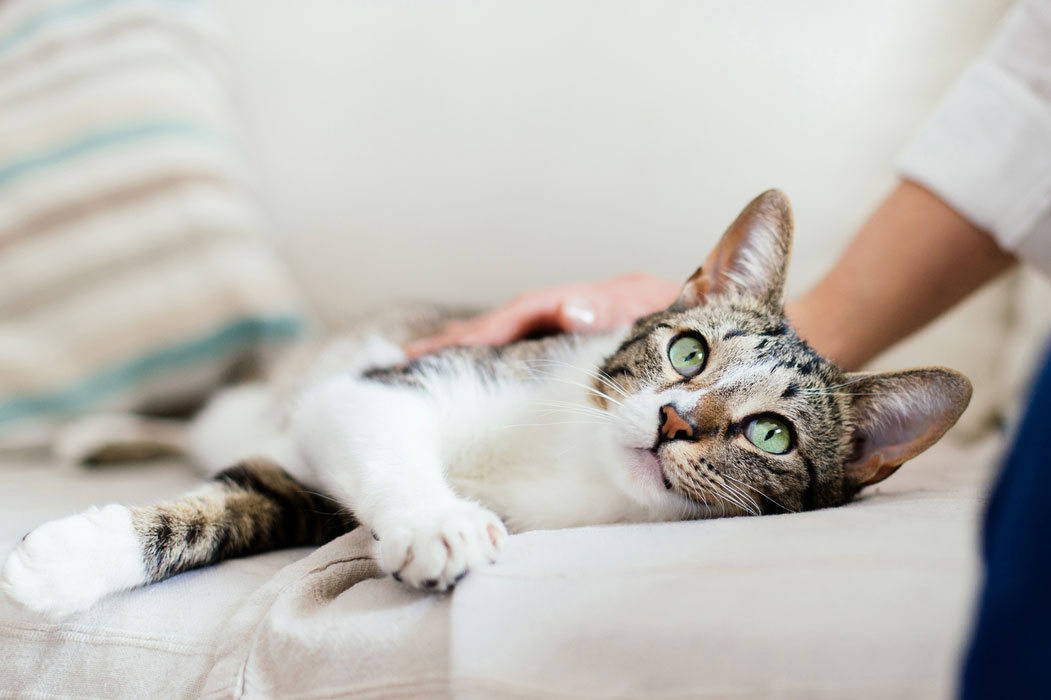What to Do If Your Cat Is Limping

Here's the scenario: You're watching TV, and your cat walks by. But something doesn't look right, drawing your attention. Is he limping?
Limping can be difficult to detect in a cat, especially when it's mild. Basically, you need to be aware of what your cat's usual walk looks like, so you can quickly catch any tiny change.
Other times, the limp will be obvious. Your kitty may even be completely holding up one leg.
Whether your cat has a slight or significant limp, you'll need to know what to do. Here are some tips.
First, Know What Causes Lameness
Lameness or limping in cats can be due to an injury or disease process that negatively affects any part of the leg. That could be anything that involves the leg's nerves, bones, muscles, joints, tendons, ligaments, or even, in some cases, skin.
Just because your kitty is holding up a paw doesn't mean it's the paw itself that's affected. It could still be anything up the leg and even into the spine.
How to Determine the Severity of a Limp
The first thing you'll need to do if you detect a gait change in your cat is to gather some information about it. That will require you to observe the cat carefully. Write down what you see so you can tell the vet. Try to answer these questions:
- Which leg(s) is affected? That can be tricky to determine if the cat isn't holding up the leg. Take your time to figure out which leg isn't right and be sure to mark it down based on which one it is for the cat, not for you as you face him.
- When does the limp occur? Is the limp constant or only when your cat is doing a particular thing like running or jumping? Is it only in the morning and then gets better, or does it start OK but worsen as the day progresses?
-
Is your kitty licking or chewing at a particular area on the affected leg? If so, do what you can to dissuade him until you can get to the vet for a diagnosis.
- Is there any visible swelling? Swelling can indicate an abscess, fracture, or sprain.
Gather the answers to those questions and anything else you notice and think may be valuable in helping your vet determine what's wrong.
Take Care When Approaching the Kitty
If you decide to try and feel or examine the hurt leg, do so with extreme care. If the leg is painful or you accidentally touch a painful part, the kitty may bite or scratch.
First Aid for Cat Lameness
In general, you should get your limping cat to the vet as soon as possible. Until then, confine him so he can't exacerbate whatever injury may be going on.
But there are some situations for which you may need to do some first aid. Here are some examples:
- Foreign body: This is when an object is stuck in the cat's skin or deeper, usually in the paw. If it's possible to do so without risking a bite or scratch, remove the object. Clean the wound with warm water and mild soap, dry it thoroughly, apply antibiotic ointment, and keep the cat from licking the area. You may need to use an Elizabethan collar or put a small sock over the paw. It's a good idea to have the area checked out by a vet as soon as you can to make sure systemic antibiotics aren't required.
- Broken claw: If there is bleeding from a torn or broken claw, control it, if possible, by firmly applying cornstarch or flour to the bleeding spot. Once the bleeding is under control, clean around the area if you can and protect it with a sock. The kitty may need systemic antibiotics or removal of the broken claw by the veterinarian.
- Any lameness: If your cat is limping for an unknown reason, it's probably a good idea to confine him to a small room or cat carrier until you know what's going on. Otherwise, the kitty may make the condition worse by overusing the leg.
How to Get a Painful Cat to the Vet
When transporting your lame cat to the vet, put him in a carrier to confine him. If he's painful, be extra careful. If your carrier allows it, you may wish to remove the top, lay the cat inside, and then replace and secure the top of the carrier.
Do Not Give Medications at Home
If your cat is lame, don't forget: Cats are exquisitely sensitive to certain medications. Do not give any human meds (or meds from other pets) without first checking with your veterinarian.
You May Also Like These Articles:
Cat Limping: Do Cats Have Fewer Joint Problems Than Dogs?
First Aid for Cats: An Overview
Handling and Transporting Sick or Injured Cats
First Aid for External Bleeding in Cats
Notice: Ask-a-Vet is an affiliated service for those who wish to speak with a veterinary professional about their pet's specific condition. Initially, a bot will ask questions to determine the general nature of your concern. Then, you will be transferred to a human. There is a charge for the service if you choose to connect to a veterinarian. Ask-a-Vet is not manned by the staff or owners of CatHealth.com, and the advice given should not delay or replace a visit to your veterinarian.





